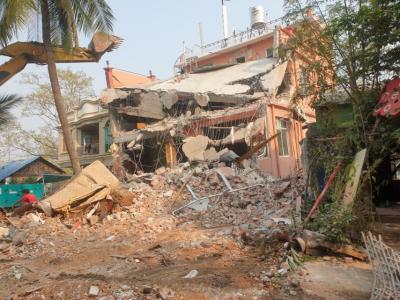publication / March 28, 2025
World Vision’s ongoing commitment to children with disabilities
World Vision's 2022 report highlights achievements and new commitments to children and persons with disabilities, showcasing progress and future goals
press release / March 17, 2025
European Commissioner Marta Kos Visits EU-Funded RISE HER Program, Implemented by World Vision Albania
European Commissioner for Enlargement, Marta Kos, visited Albania from March 12 to 14 and participated in a significant event hosted by World Vision Albania, focusing on survivors of domestic and gender-based violence.
press release / April 2, 2025
Myanmar Children at Risk of Abuse and Exploitation Following Devastating Earthquake, Warns World Vision
World Vision warns of increased child abuse risk in Myanmar post-earthquake. Displacement and separation from families heighten vulnerability. Urgent aid needed.
video / March 12, 2025
Syria's 14 years Anniversary - A single dream
Zaher Jaber, Communications Officer at World Vision Syria, reflects on how, 14 years since the conflict began, the hopes of the Syrian people now rest on a single dream – the dream of returning to their homes. Despite the hardships, this hope remains a beacon for many, as they hold onto the possibility of rebuilding their lives and communities.
press release / March 28, 2025
World Vision responds to central Myanmar earthquake
Press release about the earthquake that shook Myanmar on March 28, 2025
publication / March 17, 2025
Annual Progress Report FY2024|World Vision International Nepal|English
World Vision Nepal's FY24 report: Impacted 468K+ vulnerable people, 328K+ children, via education, nutrition, & protection projects.
video / March 12, 2025
Advocacy video from Aleppo - World Vision Syria Response
Advocacy video from Aleppo - World Vision Syria Response
article / March 24, 2025
Building Resilience: World Vision Kenya Officially Hands over the Kalobeyei Integrated Drought Response and Management Project (K-DREAM) to Turkana West Community
Turkana County faces harsh droughts and floods, endangering communities and livelihoods. To boost resilience, World Vision Kenya, with funding from KOICA, launched the K-DREAM Project, a three-year project (2022-2024), equipping locals with life-saving skills and cash relief. Discover how the project has impacted over 31,000+ people while fostering a sustainable future in Turkana West.





